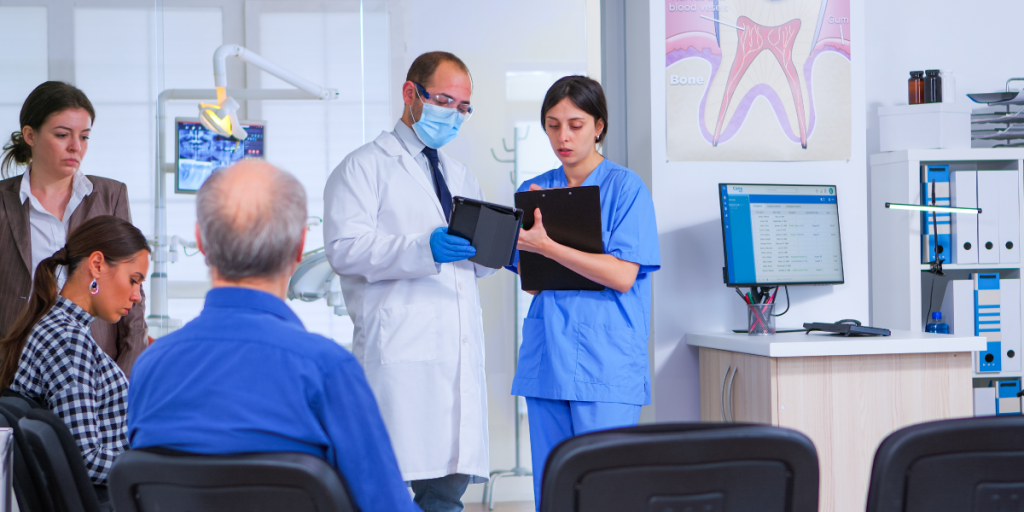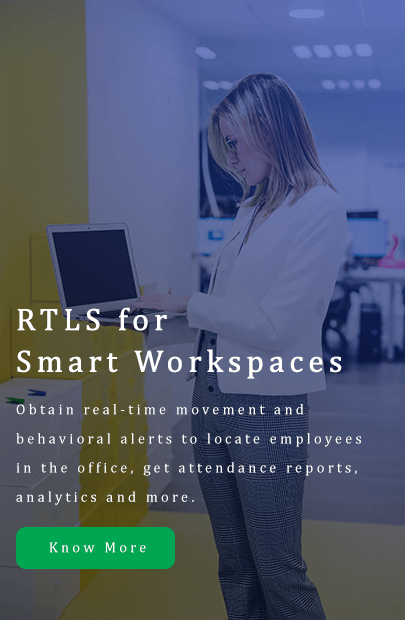Real-time location solutions (RTLS) in healthcare have the potential to significantly transform the sector. From optimizing operations to initiating real-time resource monitoring, the applications of the RTLS technology for healthcare are many. During the pinnacle of the pandemic, the healthcare industry faced a major setback in resource optimization and streamlining its operations. Still, there were many who experimented with the RTLS technology in healthcare for resource optimization and saw incredible results.
According to an online study, around 117 healthcare professionals who experimented with RTLS-based asset monitoring reported it being useful and were looking forward to continuing its usage in the future.
Read below and see how RTLS technology can become an integral part of the post-pandemic health industry.
#Real-time assistance for healthcare workers
It is no secret that healthcare professionals work in a high-pressure environment. They have the responsibility of offering emergency care at the right time to save lives. During the peak of the pandemic, many healthcare workers reported higher than usual pressure in the workplace. As reports suggest, around 20% of US nurses reported having suffered more workspace violence during this time period. Lower staff numbers and restrictions on visitation are two of the contributing factors to this higher pressure.
To avoid repetition of this scenario, healthcare-based RTLS solutions are being implemented in facilities to offer assistance to nurses and doctors in real-time. These solutions make sure that real-time alerts are generated in case of an emergency. The staff’s location can be tracked easily with RTLS technology and help is offered without missing a beat. Healthcare facilities can also get customized location intelligence services after consultation with the right IT firm.
#Ensuring higher satisfaction rates
With higher patient and staff satisfaction rates, healthcare facilities will be able to maintain their bottom lines. Healthcare facilities during the pandemic witnessed a dip in both the patient and staff satisfaction rates, owing to facilities not being able to streamline their everyday tasks. When things went downhill in many hospitals, around 62% of nurses (close to retirement) were thinking of calling it quits.
By integrating RTLS technology into their infrastructure, hospitals and clinics can easily enhance their workflows and make sure that none of the staff have to deal with burnout or other inconveniences. With Real-time location services, healthcare facilities can keep tabs on the number of staff in various departments, ensure that there is no staff deficiency (immediate assistance offered in real-time to staff during emergencies), and also monitor healthcare assets. The location intelligence solutions will also ensure workflow enhancement, bringing patient satisfaction levels to new heights.
#Bringing transparency to healthcare assets
As Covid-19 raged on, healthcare facilities witnessed dwindling emergency equipment. Although the supply chain market played a role in this shortage, one major reason was the inability of healthcare professionals to locate these assets on time. When emergencies piled on, hospitals lost count of the assets they had in stock. This caused delayed treatments and further panic among the staff and the patients.
RTLS technology will enable healthcare centers to easily monitor their assets and supplies and allocate them to the right person in real-time. This technology will facilitate improved decision-making across all departments and ensures quick allocation of resources throughout the facility.
#Scaling down infection
Back when the pandemic went on uncontrollably, the hospitals and other healthcare facilities struggled to contain the virus transmission. Social distancing was practiced and contact tracing features were implemented in many organizations. When it comes to controlling infection rates, it is not just the Covid-19 virus the healthcare industry has to worry about. Healthcare-associated infections (HAIs) are something that is seen commonly in admitted patients. According to reports, almost 1 in 31 patients have reported having suffered from HAI.
It is possible to control the infection rates to an extent using RTLS solutions. The technology can be used to generate real-time alerts, notifying patients and staff to effectively adhere to basic hygiene protocols.
These were some of the countless areas where RTLS technology can aid the healthcare sector. By coordinating properly with the technology provider, the healthcare admins can scale the operational efficiency of their facilities and bring higher patient/staff satisfaction rates.







